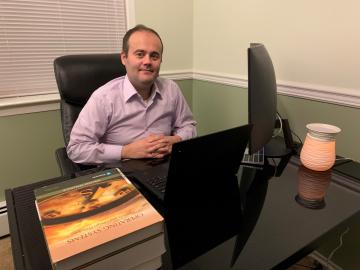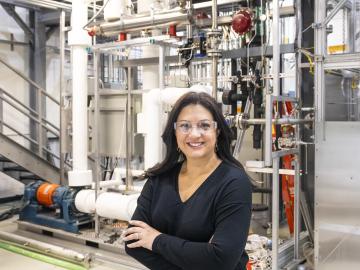
Filter News
Area of Research
- (-) Energy Science (27)
- (-) Fusion and Fission (19)
- (-) National Security (19)
- Advanced Manufacturing (2)
- Biology and Environment (9)
- Computational Biology (1)
- Computer Science (1)
- Electricity and Smart Grid (1)
- Fusion Energy (4)
- Isotopes (3)
- Materials (38)
- Materials for Computing (4)
- Neutron Science (58)
- Nuclear Science and Technology (18)
- Supercomputing (23)
News Type
News Topics
- (-) Grid (17)
- (-) Machine Learning (8)
- (-) Materials Science (7)
- (-) Neutron Science (5)
- (-) Nuclear Energy (19)
- (-) Polymers (1)
- (-) Security (8)
- 3-D Printing/Advanced Manufacturing (26)
- Advanced Reactors (2)
- Artificial Intelligence (9)
- Big Data (5)
- Bioenergy (11)
- Biology (6)
- Biomedical (4)
- Biotechnology (2)
- Buildings (14)
- Chemical Sciences (4)
- Clean Water (3)
- Composites (2)
- Computer Science (15)
- Coronavirus (7)
- Critical Materials (1)
- Cybersecurity (13)
- Education (1)
- Energy Storage (23)
- Environment (24)
- Exascale Computing (1)
- Fossil Energy (1)
- Frontier (1)
- Fusion (12)
- High-Performance Computing (6)
- Hydropower (1)
- Isotopes (1)
- ITER (2)
- Materials (6)
- Mathematics (1)
- Mercury (1)
- Microelectronics (1)
- Microscopy (2)
- Nanotechnology (3)
- National Security (25)
- Partnerships (5)
- Physics (1)
- Quantum Science (2)
- Simulation (3)
- Space Exploration (1)
- Summit (3)
- Transportation (22)
Media Contacts

ORNL researchers used the nation’s fastest supercomputer to map the molecular vibrations of an important but little-studied uranium compound produced during the nuclear fuel cycle for results that could lead to a cleaner, safer world.

A team of researchers has developed a novel, machine learning–based technique to explore and identify relationships among medical concepts using electronic health record data across multiple healthcare providers.

Unequal access to modern infrastructure is a feature of growing cities, according to a study published this week in the Proceedings of the National Academy of Sciences

ORNL scientists had a problem mapping the genomes of bacteria to better understand the origins of their physical traits and improve their function for bioenergy production.

Having co-developed the power electronics behind ORNL’s compact, high-level wireless power technology for automobiles, Erdem Asa is looking to the skies to apply the same breakthrough to aviation.

Four first-of-a-kind 3D-printed fuel assembly brackets, produced at the Department of Energy’s Manufacturing Demonstration Facility at Oak Ridge National Laboratory, have been installed and are now under routine operating

Deborah Frincke, one of the nation’s preeminent computer scientists and cybersecurity experts, serves as associate laboratory director of ORNL’s National Security Science Directorate. Credit: Carlos Jones/ORNL, U.S. Dept. of Energy

Oak Ridge National Laboratory expertise in fission and fusion has come together to form a new collaboration, the Fusion Energy Reactor Models Integrator, or FERMI

Toward the goal of bringing the next generation of nuclear power reactor technology online this decade, ORNL and Analysis and Measurement Services Corporation have successfully completed loop testing of instrument and control sensors for an advanced reactor design for small modular reactors.

Twenty-seven ORNL researchers Zoomed into 11 middle schools across Tennessee during the annual Engineers Week in February. East Tennessee schools throughout Oak Ridge and Roane, Sevier, Blount and Loudon counties participated, with three West Tennessee schools joining in.


